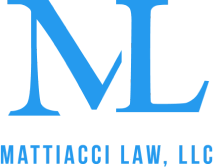What Happens During a Car Accident Settlement Hearing in Pennsylvania?

A serious car wreck can happen to anyone. No matter how attentive, careful, and defensively we drive, we cannot fully insulate ourselves from the terrible decisions of other drivers.
People throw caution to the wind and speed when in a hurry or just because of impatience. They try to beat yellow lights and fail. They forget to check their blind spot. They text and drive. They drink and drive.
Hazardous drivers can cause you and your family serious injury. Pennsylvania law requires that negligent driver fully compensate their victims.
For accident victims, this means filing a lawsuit and battling the other driver’s insurance company.
Insurance companies are in business to generate profits. So when their insured is at fault, they usually know they are on the hook, and their adjusters and attorneys work to lower the payout as much as possible.
Mattiacci Law’s car accident lawyers push back against low settlement offers. They understand that insurers hope plaintiffs will accept less than their claims are worth because they want to avoid waiting years for a trial. But if plaintiffs allow insurers to shortchange them, they may never fully emerge from the financial hole the accident has created.
Throughout the legal process, many opportunities for settlement arise. When direct negotiations with the defense have proven unproductive, a settlement conference often opens the door to a worthwhile settlement offer.
How Does a Settlement Conference Work in Pennsylvania?
Judges order settlement conferences to broker an agreement between the parties before a case goes to trial. Trials take an enormous bite out of the court’s calendar, and if all personal injury cases went before a jury, plaintiffs would wait many more years for a resolution.
Settlement conferences cannot resolve all cases.. In some situations, fundamental facts remain in dispute and neither party gives way in negotiations, necessitating a jury to act as a trier of fact.
However, most settlement conferences result in an agreement. Because of this, they are usually good news for car accident plaintiffs. They mean a strong chance for a fair settlement without investing time and energy in a risky trial.
Judges officiate settlement conferences, though the process is less formal than a trial. The judge hosts the talks in chambers or a conference room. Both legal teams and the litigants attend. Insurance companies also need a representative available to approve any settlement.
Settlement conferences begin with each side explaining their case to the judge. Lawyers present their evidence and views on appropriate settlement amounts. The judge may ask questions to gain a clearer understanding of the issues.
Liability and Settlement Conferences
Many Car accident settlement conferences begin with the two sides presenting different pictures of the facts and liability amounts. The plaintiff often argues that the defendant is fully liable for the claim. The defense may reply that their client has no liability, has less liability than the plaintiff, or has majority liability but some of the blame rests with the plaintiff.
Comparative Negligence and Settlement Conferences in Pennsylvania
Pennsylvania is a comparative negligence state. For car accident victims, this standard requires them to demonstrate the defendant(s) are at least 51% at fault to receive any award. If they prove the majority negligence of the defendant(s), they receive their damages less the percentage of fault the jury assigns them.
For example, if a jury finds that the plaintiff is over 51% responsible for their own injuries, no award is given during a car accident settlement. The defense wins.
On the other hand, if the jury rules that the defense is 100% liable, plaintiffs receive 100% of their proven damages.
However, in many cases, the jury finds that the defendant(s) bear the majority of the liability, but the plaintiff contributed somewhat to the accident. For instance, if the plaintiff sustained $100,000 in damages and the jury finds he is 20% responsible for the accident, he receives an award of $80,000 instead of the full $100,000.
When the defense argues their client has 0% responsibility, a jury must decide which side is more likely correct.
For instance, the plaintiff may contend that the defendant ran a stop sign, causing the accident and his injuries. The defense may counter that it was the plaintiff who ran a stop sign, so the plaintiff caused his own injuries.
These are two very different accounts of the accident’s cause. At a settlement conference, the lawyers will present arguments about why the court should believe their client.
For instance, the plaintiff’s lawyers might reference witness testimony from the plaintiff’s passenger. To counter this, the defense may argue the passenger is biased in favor of the plaintiff and that physical evidence demonstrates the accident must have occurred the way the defendant claims.
The judge would try to address each side’s differences and determine if a path forward on the settlement exists. However, if both sides stick to their accounts and refuse to negotiate, the case must go before a jury.
The court will instruct the jury to assign liability based on a preponderance of the evidence. A preponderance of the evidence means more likely than not; so, if the jury finds it more likely than not that the plaintiff’s account is accurate, it finds for the plaintiff and vice versa.
In other cases, the defendant is clearly at fault, but the insurance company argues that the plaintiff bears a share of the responsibility; therefore, the award should be reduced.
For instance, the facts of the case may make it clear that the defendant is at fault for a car accident because he made a left-hand turn at an intersection in front of the plaintiff's oncoming vehicle.
However, the defense could present evidence that the plaintiff was traveling at 50 MPH in a 35 MPH zone. Further, the plaintiff could have avoided the accident by driving the speed limit. Finally, even if the plaintiff could not have avoided the accident, the damage would be much less if he obeyed the speed limit.
At a settlement conference, the plaintiff’s attorneys may contend that their client has no liability for the accident. They could assert that the plaintiff was traveling the speed limit; therefore, any difference in the plaintiff’s speed would not prevent the collision or mitigate the damage.
In this example, the plaintiff may ask for $100,000 in damages, while the defense argues the damages should be $70,000 because the plaintiff is 30% liable.
Though there is some common ground between the two sides, there is still a material fact in dispute: Was the plaintiff speeding? The judge would examine the evidence and attempt to bring the sides to an agreement. However, the case must proceed to trial if they remain far apart.
Car Accident Settlement Conferences and Damage Amounts
A settlement conference can also be a forum to resolve disputes about damage amounts. In these cases, the liability for the accident may reside only with the defendant. For example, the defendant may have been texting while driving when he failed to see traffic stopping for a red light ahead of him. As a result, he slammed into the plaintiff, causing her injuries.
Despite the defendant's negligence is obvious, the insurance company may refuse to offer a settlement amount the plaintiff is willing to accept.
For example, the plaintiff may present economic damages of $50,000 in medical bills and $25,000 in lost income. She may also demand 4X the monetary damages in pain and suffering for a total of $375,000. The defense may counter that her lost income was due to external factors and that her pain and suffering are worth 1X its view of economic damages, for a total of $100,000.
Though these sides seem far apart, a settlement conference may succeed in producing an agreement. The judge would scrutinize the evidence, looking at factors such as medical evidence, documentation of lost income, and the plaintiff’s account of the injury's impact on her life. Hypothetically, the judge may recommend the defendant pay the entire $75,000 in economic damages and 3X that amount in general damages, for a total of $300,000.
Facing a jury with no prospect of shifting liability onto the plaintiff and strong medical evidence backing up the lost income and pain and suffering claims, an insurance company may decide it is in its financial interests to take the judge’s recommendation. Also, the costs of a trial and appeals could exceed $300,000, and a jury may sympathize with the plaintiff and award a much higher figure.
Car Accident Settlement Conferences Benefit Plaintiffs
Most car accident injury cases end in a settlement. Typically, insurers try to offer low-ball settlements in the hopes plaintiffs will take them out of convenience or financial desperation. Mattiacci Law takes a hard line against these unfair business practices.
Insurance companies take premium payments with the understanding that they must fully compensate the victims. They charge enough to more than offset the costs of following through with their commitment. Low settlement offers simply attempt to pad profits.
As litigation progresses, the costs of defending the case mount. As the trial date nears, defendants face the prospect of astronomical legal fees and potentially large jury verdicts. Because of this, pre-trial settlement conferences open opportunities for attractive settlement offers. Often, judges can resolve differences and mediate damage amounts, resulting in the plaintiff taking home the full compensation allowed by law.
Call Us to Speak With a Pennsylvania Car Accident Settlement Attorney
When you suffer a severe personal injury, you need a formidable legal team on your side. Mattiacci law specializes in winning car accident victims large settlements or jury verdicts. Contact us for a free, confidential consultation.
Related Content: How Long Does It Take Philadelphia Car Accident Lawyers to Settle a Case in PA?
